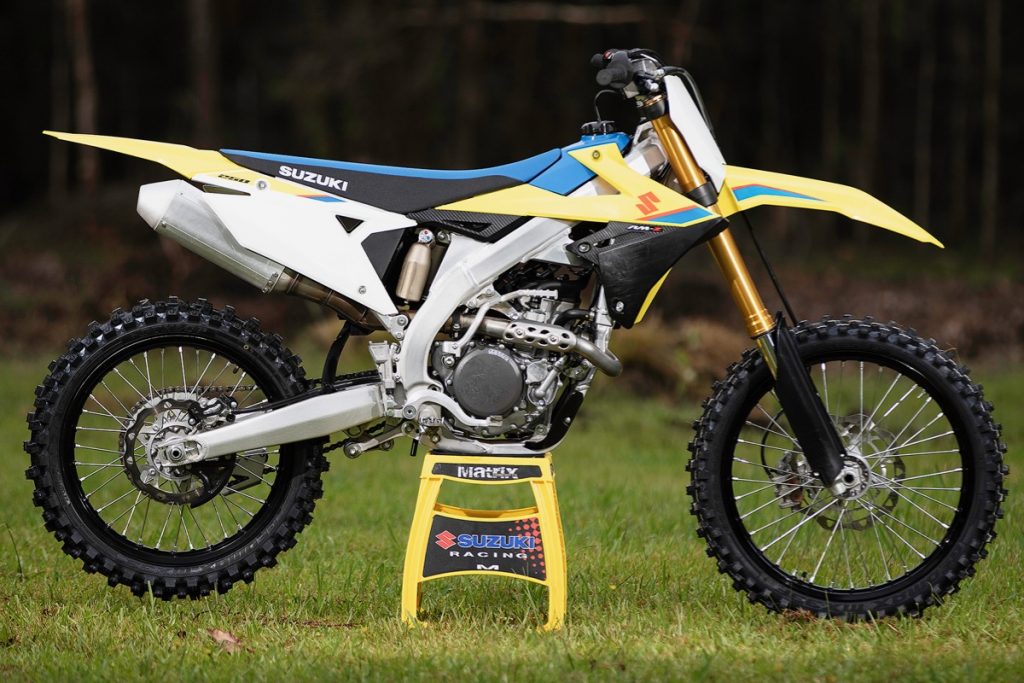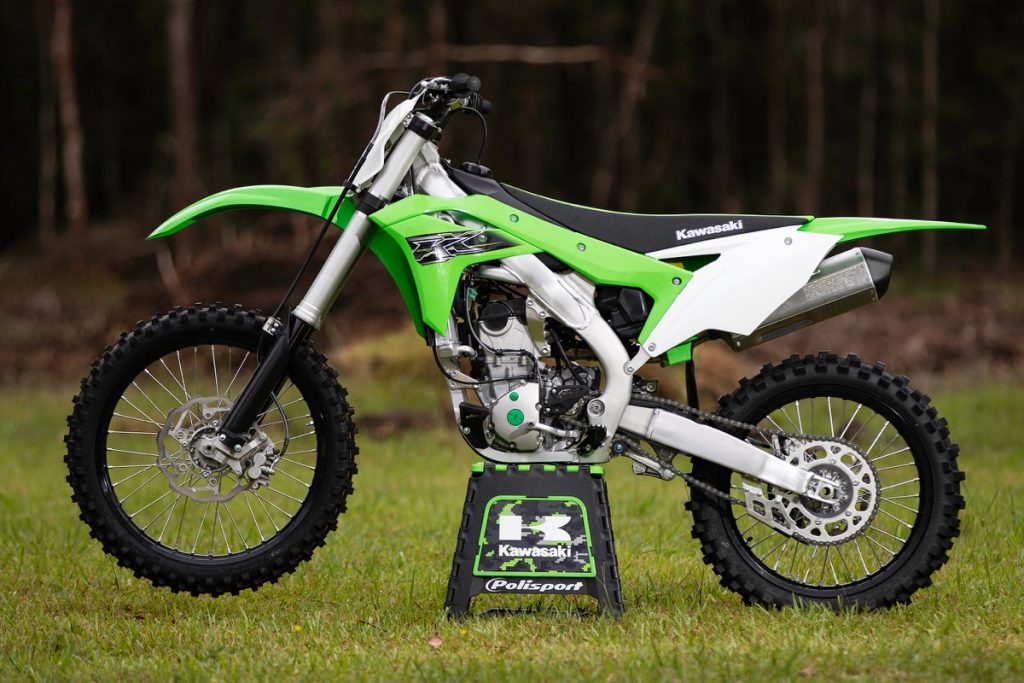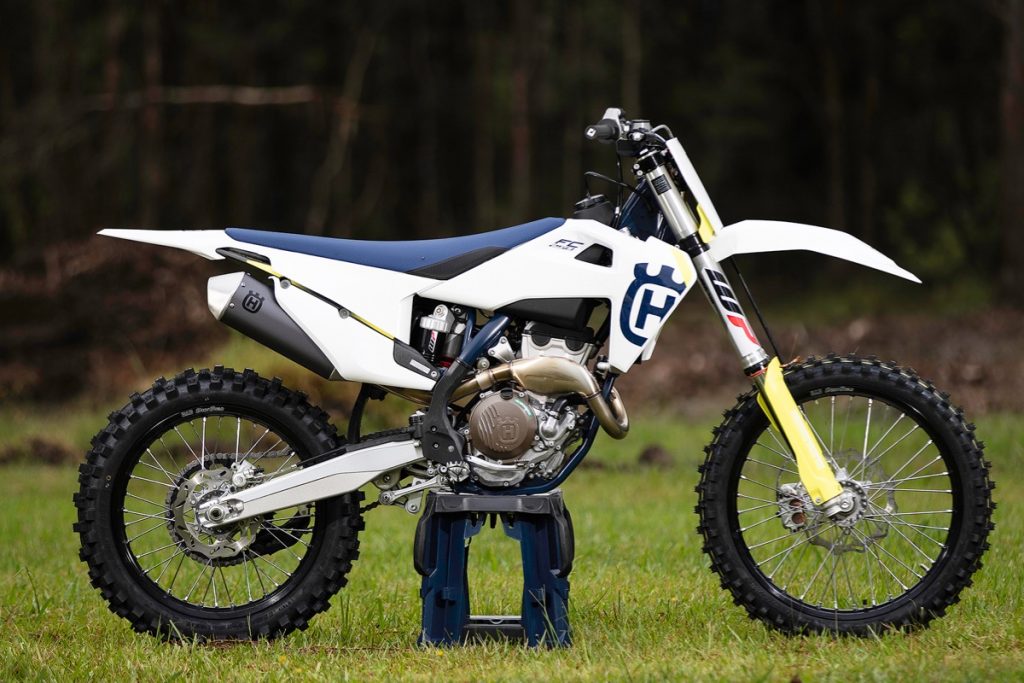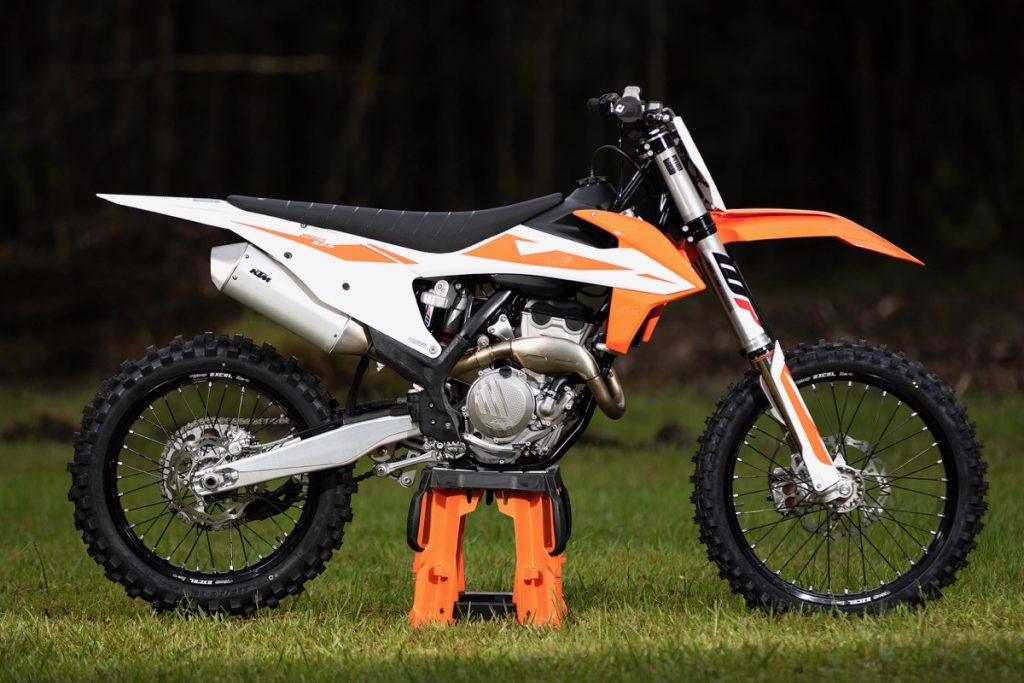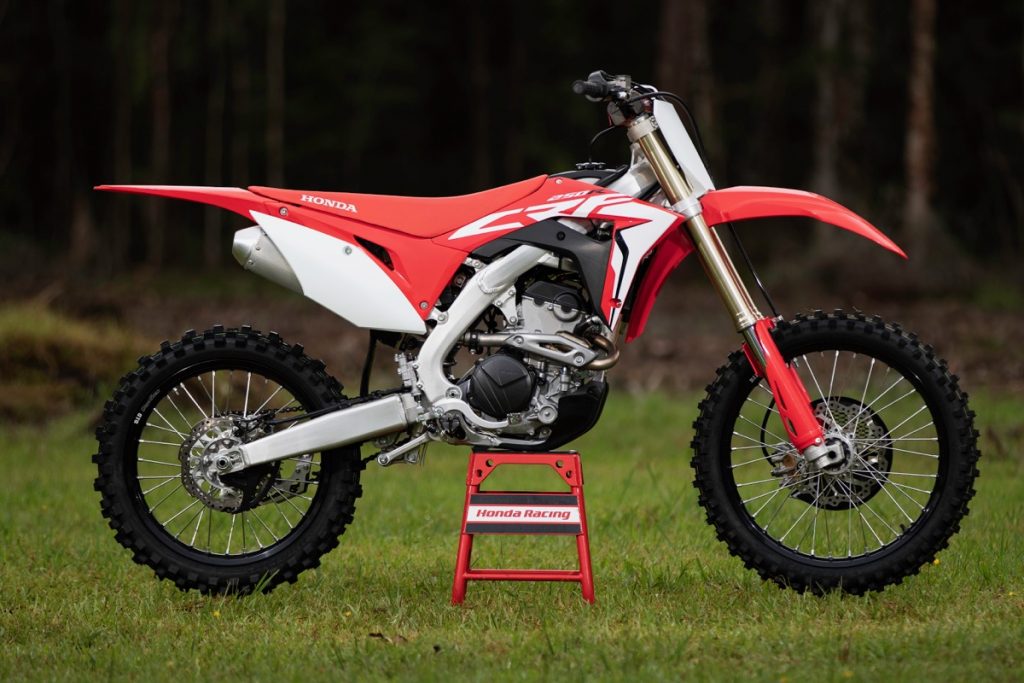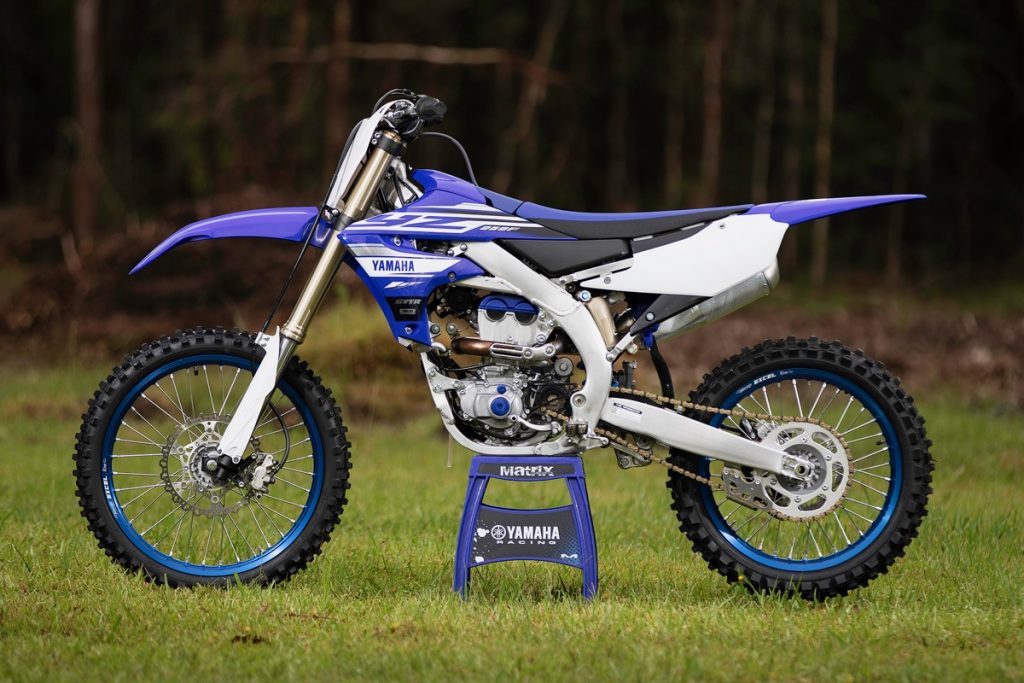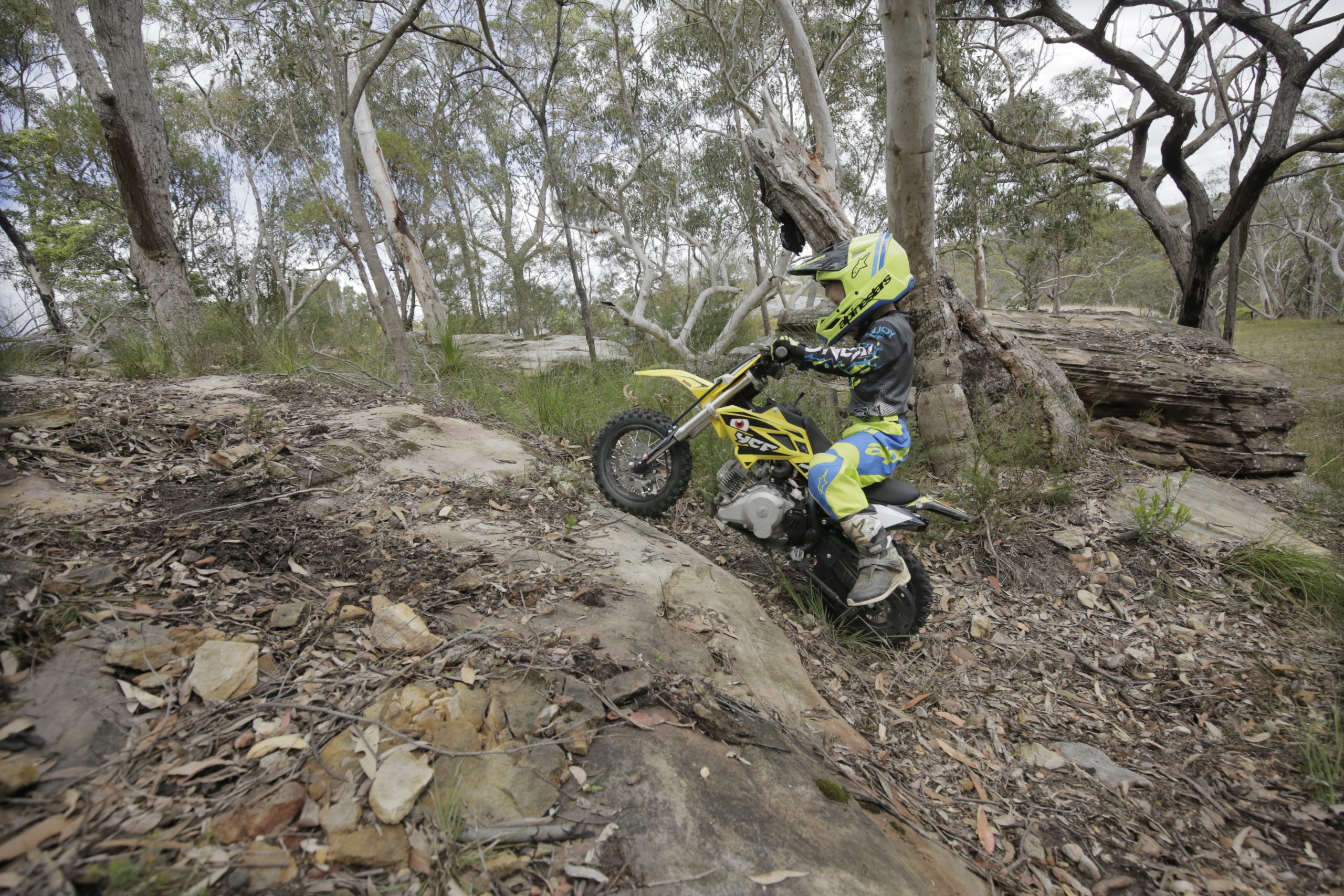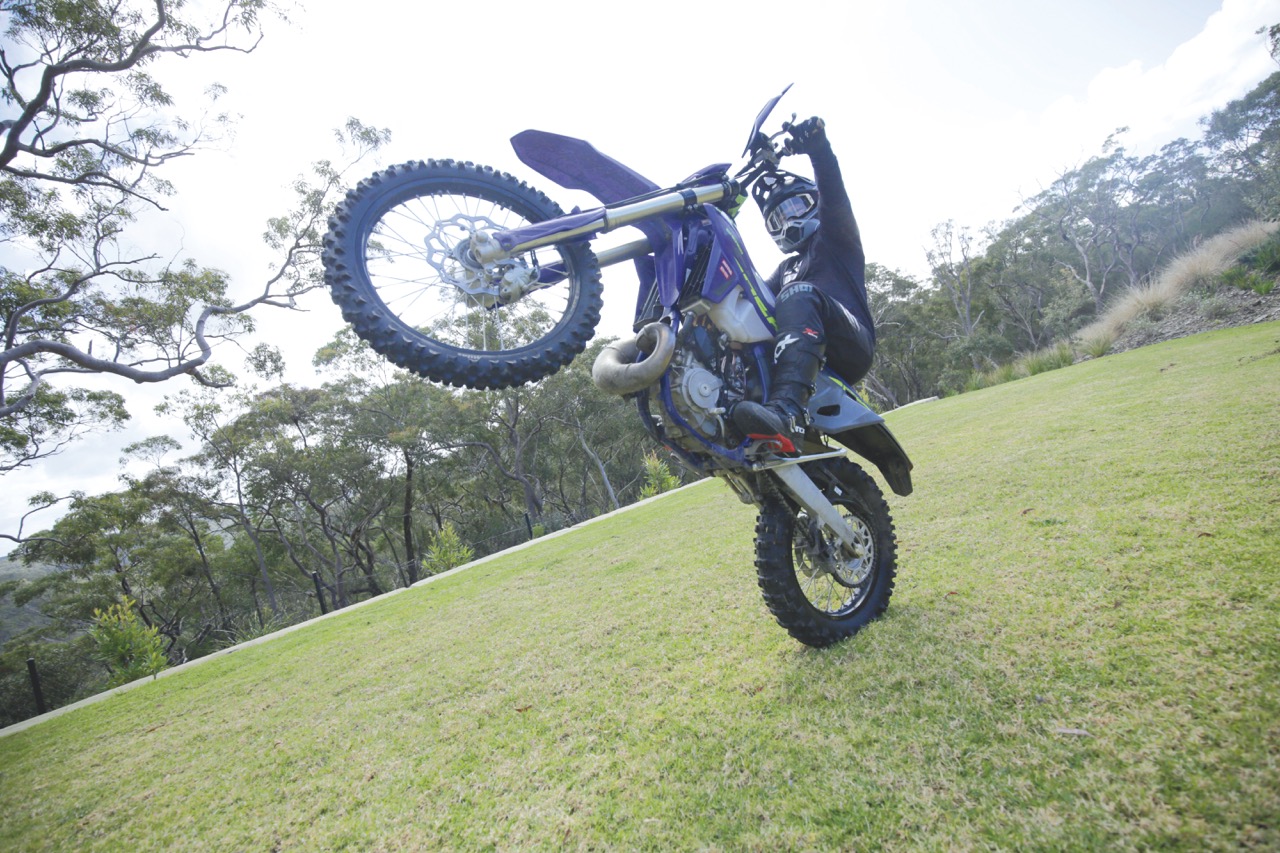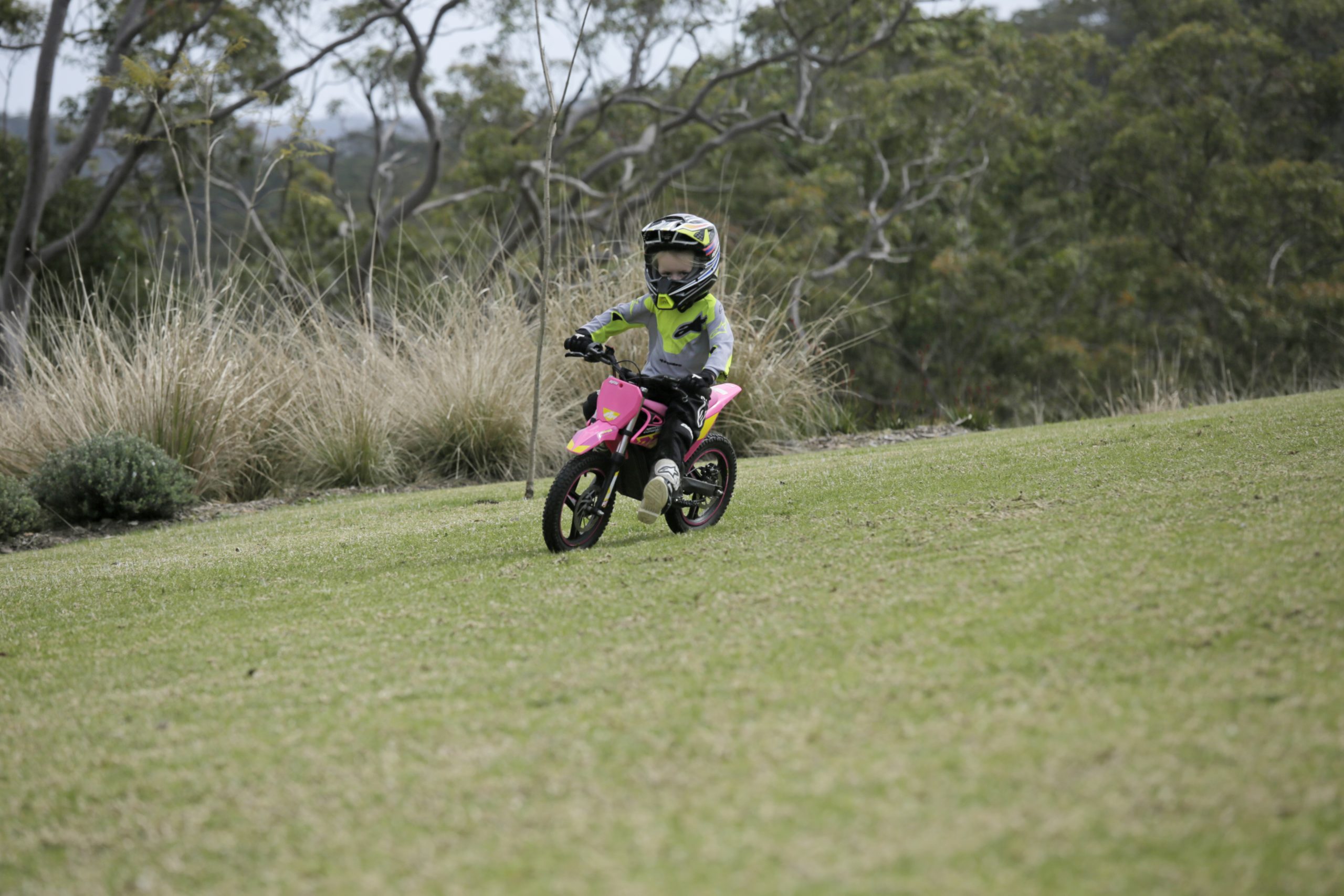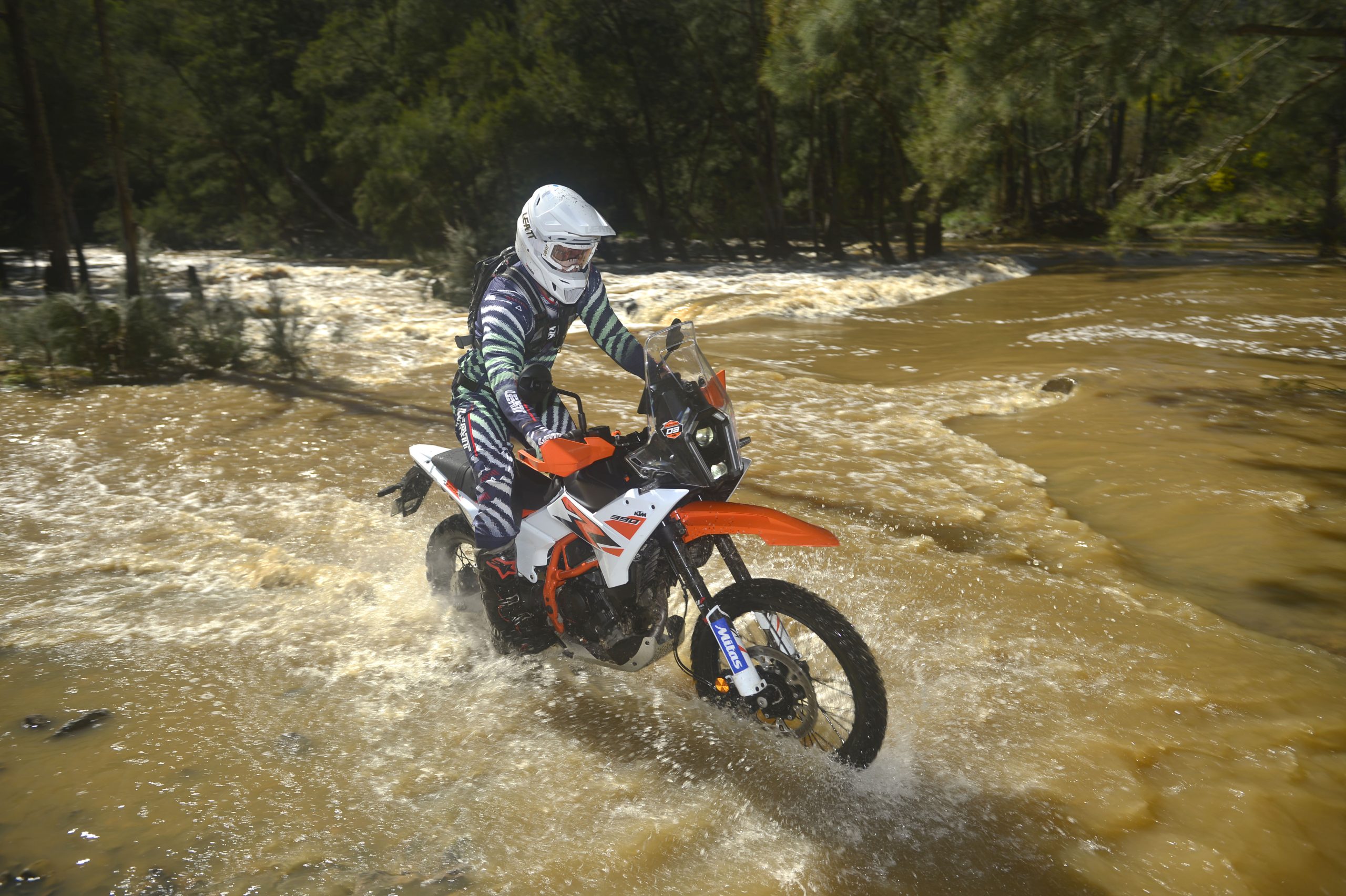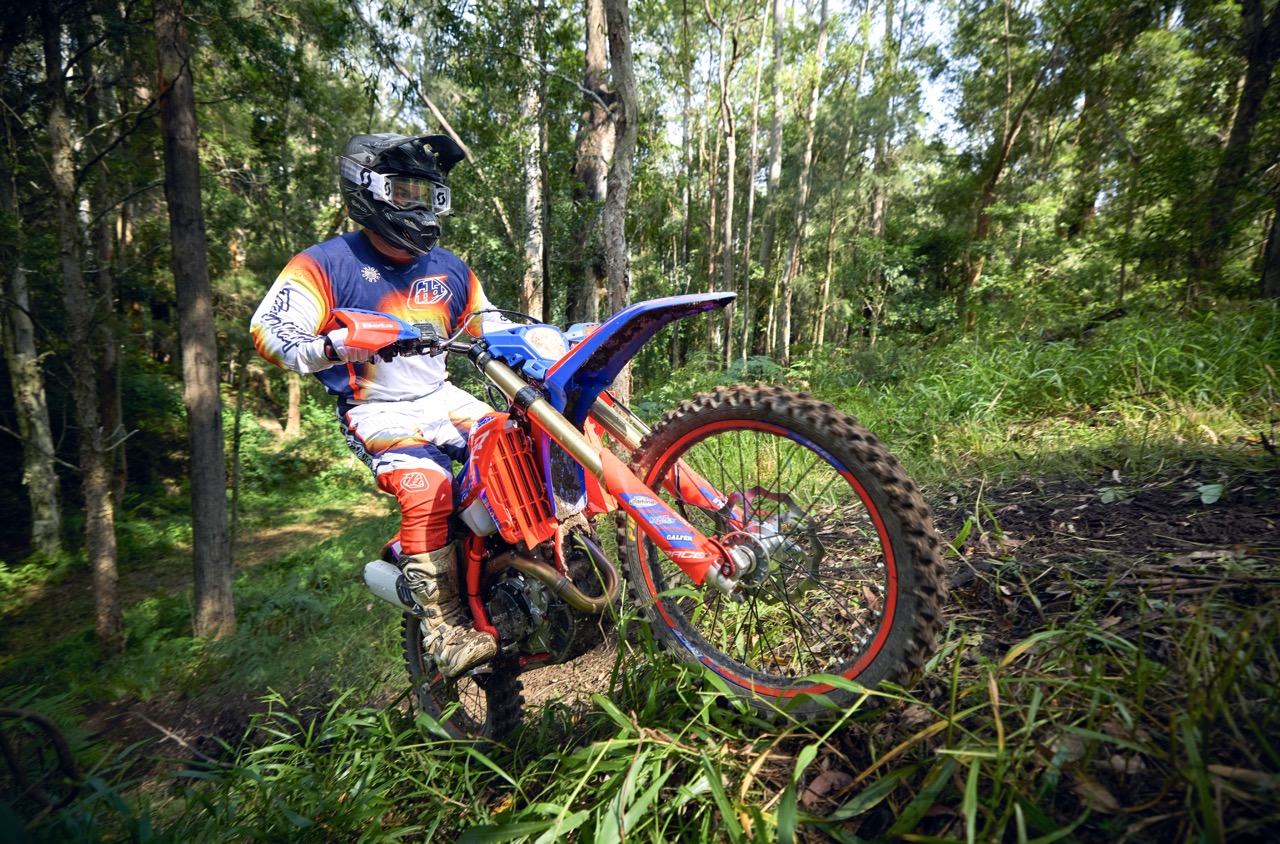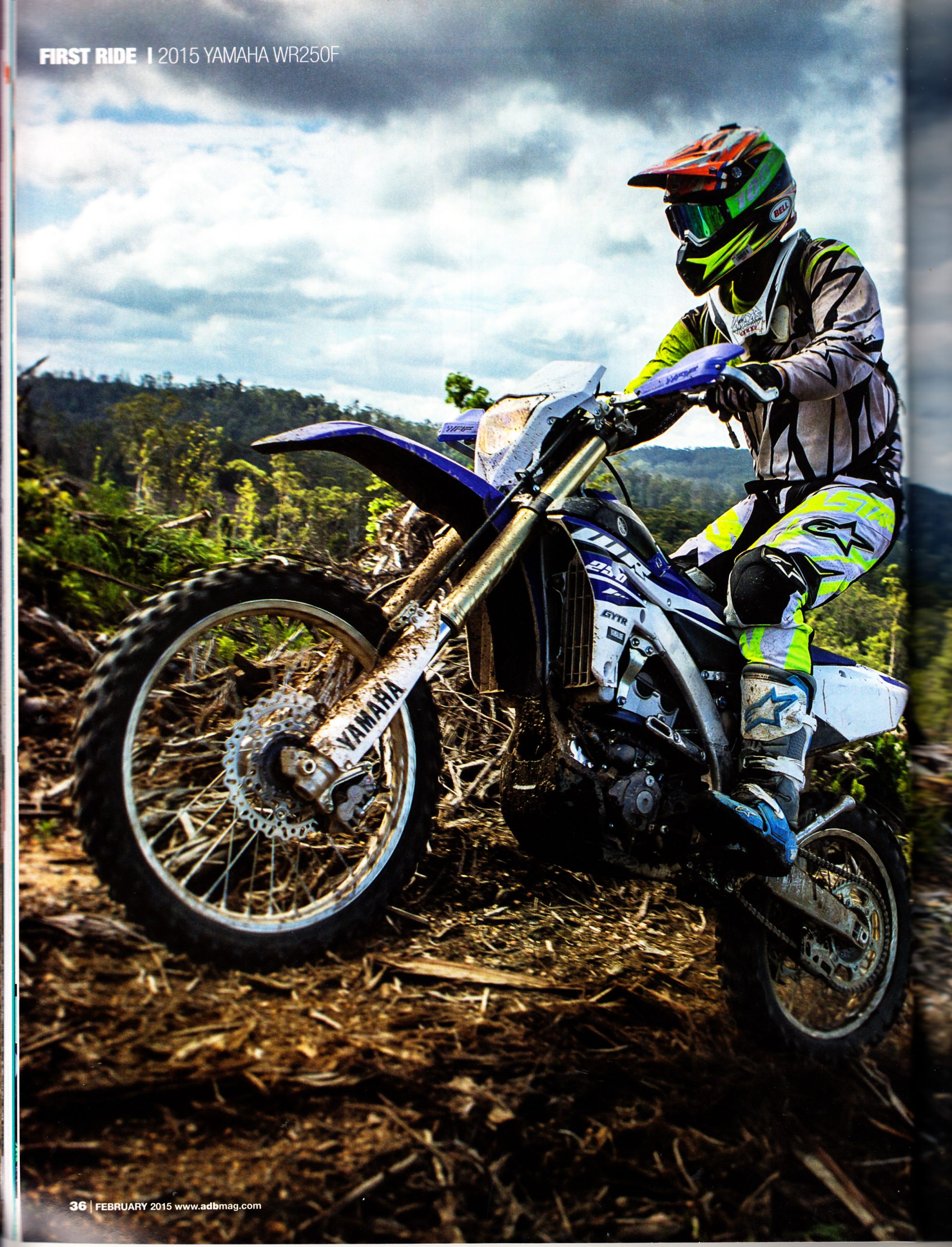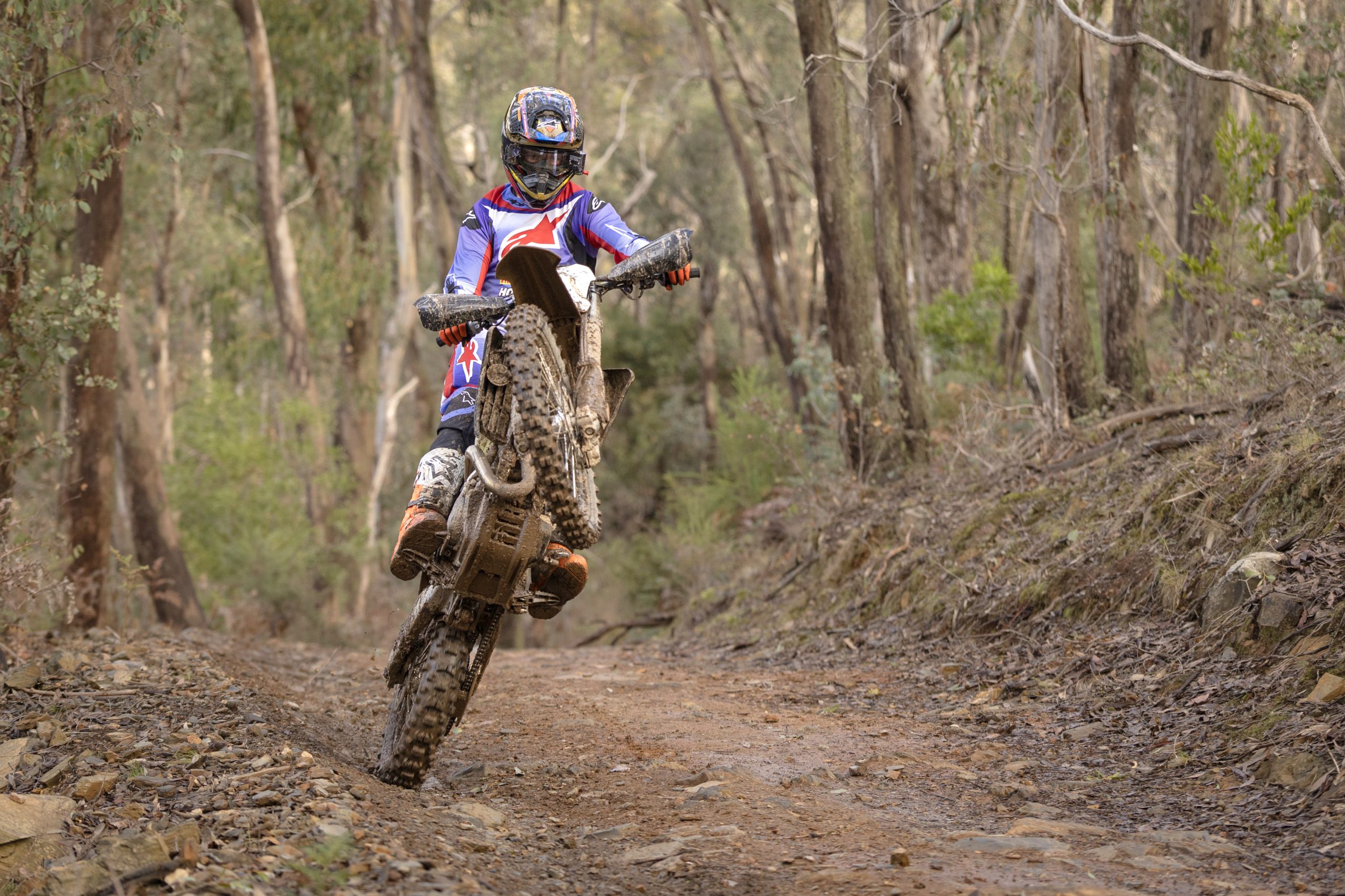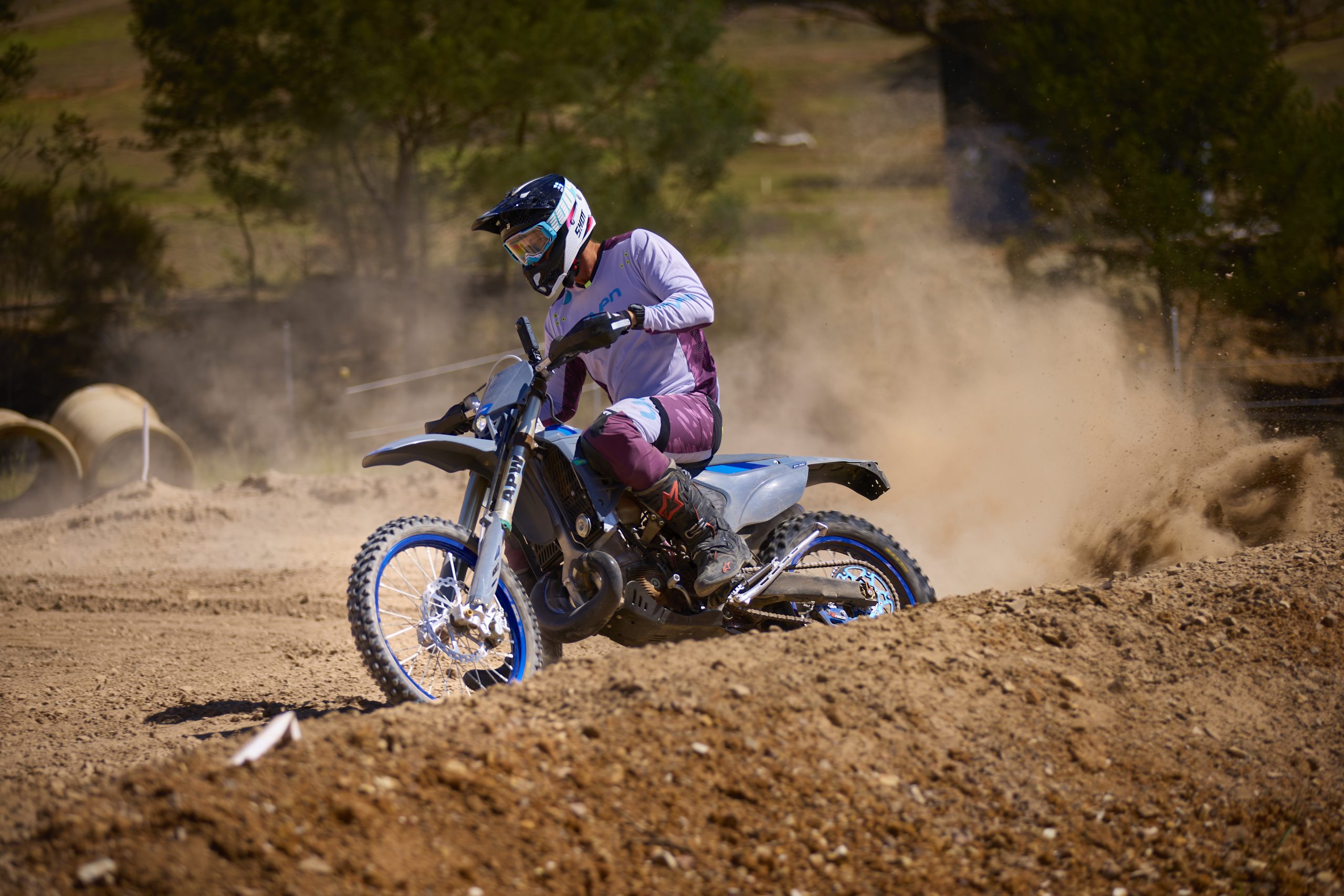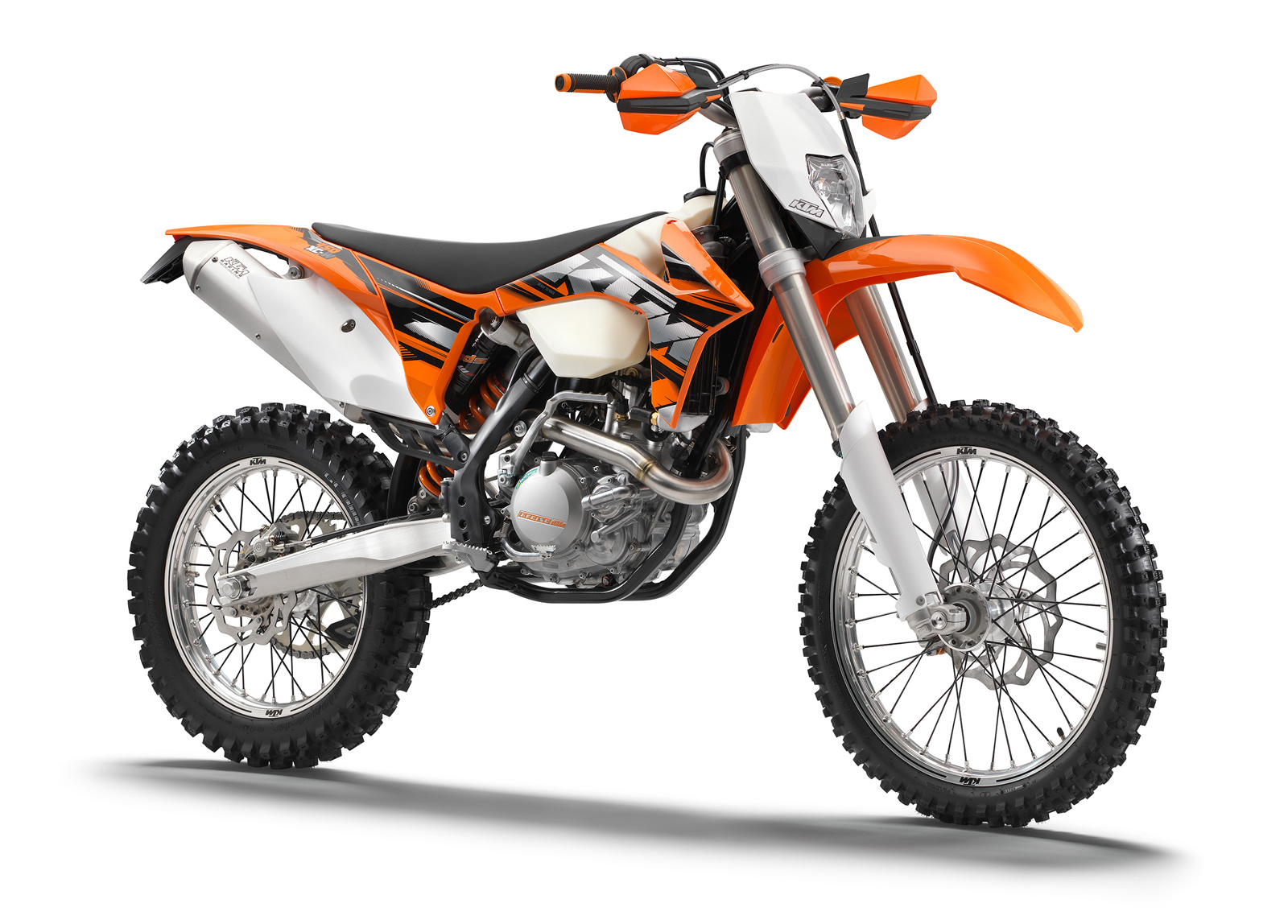This feature was first published in ADB issue #474 – March 2019
Words: Lee Hogan
Pic: John Pearson
Last year’s MX2 class at the MX Nationals featured an epic battle that raged all season, with Yamaha’s Wilson Todd eventually holding off charges from Hamish Harwood (KTM) and Aaron Tanti (Kawasaki). Todd proved that the YZ250F, our 2018 250cc MX Shootout winner, was all we hyped it up to be. But holding onto the 250cc Shootout trophy can be tricky when your rivals have come armed with new weapons.
For our 2019 quarter-litre bunfight we returned to the same testing facility as last year, the Briggs Factory. We were greeted by hot, humid weather at a track in the middle of nowhere. Shootouts always have an awesome vibe, with testers eager to swing off bikes not many Aussies have ridden and industry big-wigs happily walking around talking to each other.
Have no doubt about it, there’s some serious pride at stake with these shootouts. Nobody wants to finish last, everybody wants to finish first and, quite often, the best you can hope for is to sneak into the top three.
Test tracks can vary and riders’ individual tastes can differ, but when you look carefully at what you’re about to read, you should get an idea as to how well your favourite make and model is shaping up against some tough competition.
For this year’s 250cc Shootout we assembled the six major manufacturers and put them up against each other. Yamaha, KTM, Husqvarna and Suzuki had new models while the Honda CRF250R had received major changes to the engine, leaving just the Kawasaki KX250 relatively unchanged.
But would the major changes help or hinder the manufacturers in their quest for dominance?
Scorecard
For years now we have employed what we believe is the fairest and most unbiased method of scoring the bikes in our shootouts using manufacturer-affiliated riders. When it comes time to score the machines the riders give scores in multiple categories for each machine, except for the brand that they represent.
The scores are split into three weighted categories, comprising Motor, Suspension/Steering and Ergos/Brakes, with each rider giving a score out of 10 for each category.
Suzuki RM-Z250

The RM-Z250 received a complete overhaul this year (but not a starter motor), following the redesign seen on the RM-Z450 last year. Fortunately, the mellow-yellow machine is not so mellow anymore. The Suzuki showed massive improvement over the previous model, particularly in the engine. The new twin injectors, along with a redesigned cylinder head and new intake camshaft, gives the bike extra pull from the mid-range.
The 250 hasn’t received the Showa BFRC shock of its big brother but the KYB fork has changed. The old PSF2 air fork has been replaced by a more traditional 48mm KYB spring-cartridge unit similar to what’s been on Yamahas for years. It’s better than the air fork and provides a plusher ride.
However, the RM-Z250 was tricky to get settled. The suspension works well but it is held back by a rigid chassis that works better when the track is smooth. Suzuki claims to have increased the torsional rigidity of the frame by 10 per cent but our test riders weren’t convinced it was the right move. The rougher the track got the more we struggled with the Suzuki set up and really started to have to change our lines. Our riders tried a bunch of different suspension settings in an attempt to smooth out the twitchiness, with most ending up having to go noticeably softer on the fork.
Rider Feedback
Ryan Marmont:The motor is improved but, to be honest, I felt a little bit disappointed. I expected so much more from a brand-new bike. The suspension was way too stiff for me and even a lttle twitchy.
Megan Rutledge:The changes they have made have been incredible. Finally the bike has got some power, particularly in the top end. Perhaps the motor lacks a bit of bottom-end but the handling was still solid like I remember.
Lawson Bopping:The new Suzuki has a good motor which is much improved. The suspension felt twitchy and I just couldn’t get comfortable on this bike on such a technical and bumpy track. We played around with a few things and got it working better but still had room for improvement.
Kawasaki KX250
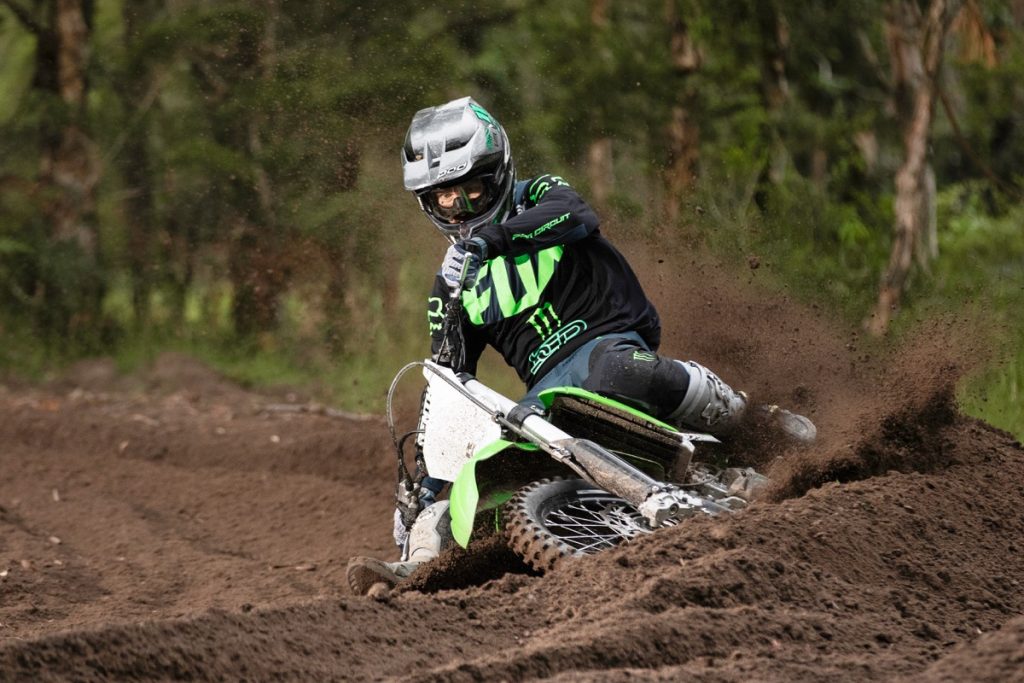
Basically unchanged apart from losing the F in the model designation, the KX is overdue for an update. But, if Kawasaki applies the changes made to the 2019 KX450, Team Green fans have something to look forward too with the 2020 model late this year.
Like the Suzuki there’s no sign of electric start, instead, Kawasaki went after extra horsepower. It added a bit more compression, changed the angle of the injectors in the throttle body, added a new intake cam and header pipe, and redesigned the intake tract. This helped the power, but it still isn’t quite where it needs to be.
The Kawasaki sits slim between your legs and has a low seating position, which was a double-edged sword. On one hand the low seat helps rail corners, particularly ruts where you carry a lower centre of gravity. On the other hand, you can feel like you’re sitting too low and almost having to squat to get down into your seating position and then back up again, which takes more energy than on some of the other bikes.
The Showa shock is stable and does its job well. But some of our test riders found the Showa SFF2 Air fork to be a bit on the twitchy side. The fork held up well on the big hits, but the mid-stroke harshness can be tricky to fine tune and, with the many hard-pack bumps on our track, we had some issues getting the fork to absorb the smaller ones. With the rider sag height at 105mm the bike was more balanced when entering turns.
Rider Feedback
Ryan Marmont:Unfortunately no big changes on the Kawasaki, and it really does feel like it’s due for an upgrade. I like the seating position. It turns well but you have to rev it to get it going.
Mat Boyd:The chassis feels a bit strange. There’s a big gap between the footpegs and the handlebar which gives you a weird seating position. It corners well but just feels different to the other bikes. I was trying to run the least amount of preload on the fork that I could to get it to work. The front-end would try to push through in the ruts. The engine feels nice but the exhaust is holding it back.
Lawson Bopping:Being on the bigger side, I’m a fan of the way the Kawasaki fits me. I’ve got more room to move. The front brake was really good also. The motor wasn’t too bad, I just went to the leaner coupler, which made the power delivery more aggressive.
Husqvarna FC250

The FC250 has an updated, slimmer and more rigid chassis, a redesigned two-piece carbon-polyamide subframe and a new Pankl gearbox. The bike also looks different and there aren’t many 2018 parts that will fit.
Husqvarna adjusted the valve timing and crafted a new exhaust system, airbox and 44mm Keihin EFI throttle body. But, all this work makes the MY19 feel tamed down. The FC250 finished third in last year’s 250cc shootout, but this year the white machine finds itself back in fourth, due to the mellower engine and WP air fork that had most of the testers scratching their heads trying to iron out a few bugs.
In recent years the Husqvarna FC250, along with the KTM 250SX-F, have struggled a bit with their gearing, with a huge gap between cogs. This is fine if you’re a lazy rider or a beginner as you won’t need to change as many gears, but if you’re a hard charger giving it a red-hot nudge then the wide ratios seem to take the edge off an otherwise good motor. The smoother power delivery for 2019 means that this gearing is even more noticeable.
Going up one to two teeth on the rear sprocket will go a long way towards fixing this issue. The bike produces nice horsepower at high revs, but struggles to pull out of corners of the bottom. I normally don’t mind the AER 48 fork, but the bumpy, slick conditions of our test track meant only the best fork would make it through unscathed. We worked to get it as smooth as possible but we felt there was still room for improvement.
Rider Feedback
Megan Rutledge:This is the bike I struggled with the most. It has okay power delivery but I just couldn’t get the suspension balanced, which is unusual for me because it’s usually one of my top picks.
Mat Boyd:I felt better on the Husky than I did on the KTM. Mainly because of the bend of the ’bar but I still had the same issues with the fork that I did on the KTM. For someone my weight to have to go so much lighter in air pressure is crazy. But I still couldn’t get the fork to soak up the small stuff. The power is okay, it just takes a bit to get going.
Lawson Bopping:I couldn’t really notice that much difference to last year’s bike even though this is a totally different machine. Nothing really stood out on it for me other than a very firm seat. I’m not a massive fan of the handlebar bend. The motor is not overly fast. Less air pressure on the fork helped a lot.
KTM 250SX-F
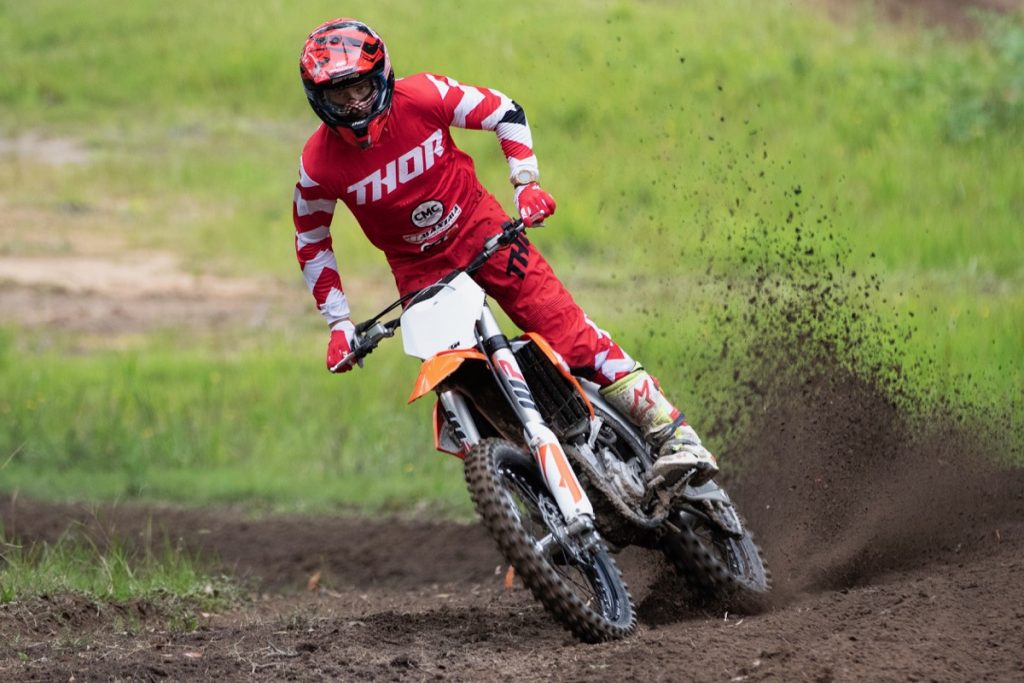
The SX-F received similar refinements to the Husqvarna, including the lighter cylinder head, a new hydro-formed chromoly frame, new bodywork, seat and airbox and the revamped Pankl gearbox. The engine feels stronger than the Husky but still feels mellower than last year. Similar gearing traits to the Husky mean you’ll be holding gears for way too long on the KTM and a couple of teeth extra on the rear sprocket will go a long way to livening up the motor.
The bike feels noticeably slimmer between your knees at the tips of the radiator shrouds and a tad wider between your feet when you’re up in the standing position compared to the MY18. The new shape is noticeable and more comfortable and is an improvement. Our test riders didn’t struggle with the WP AER 48 on the KTM as much as they did on the Husqvarna, but there was still a lot of playing around with air pressures and compression clickers to get the front-end handling as good as we could. Even the heaviest rider (Mat Boyd at 90kg) had to go quite a bit softer to make the initial part of the stroke as comfortable and rideable as possible.
Rider Feedback
Megan Rutledge:I felt much better with the ergos this year. The bike is nowhere near as wide across the tank so I was happy with that. The bike seemed to have smooth power delivery. I just found the front-end to be a bit twitchy but, other than that, I didn’t mind the KTM.
Mat Boyd:I expected a little more out of the KTM engine. I feel like they used to be more aggressive and now they’ve mellowed them out. The fork was really twitchy and a bit too active for me.
Lawson Bopping:I didn’t mind the KTM at all. I preferred it to the Husky, which felt a bit tight and rigid. Once we went lower in the fork pressure I didn’t mind how the air springs worked but the WP just wasn’t quite up to speed with the fork in the Yamaha or the Honda. The motor is quite good and particularly with the over-rev.
Honda CRF250R
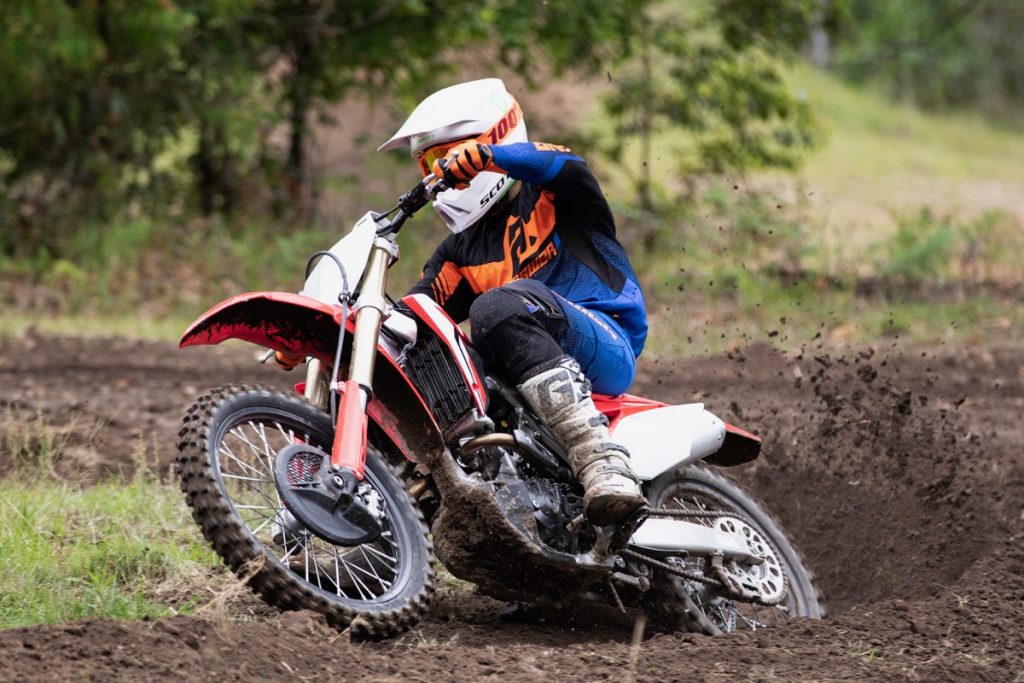
The CRF250R may look largely unchanged but that is not the case. You’ll notice new black DID rims and a Renthal Fatbar but it’s the extra power in the bottom-end that you can’t see. A number of internal changes, including a new camshaft profile, new intake and exhaust ports and new 44mm throttle body mean more bottom-end power. The motor is a huge improvement and while there is a truck load more bottom-end, Honda haven’t sacrificed any of the mid-range punch and strong over-rev.
The strongest attribute of the Honda though is in the handling. The CRF scored positively with all testers, who noted how easy the bike was to ride flat out for long periods. The Showa 49mm spring-cartridge fork worked a treat on the technical Briggs Factory circuit and the bike squatted nicely for corners, whether they were hardpack, flat turns, deep-rutted corners or some of the powdery berms we got late in the day.
The Showa shock was faultless and balanced up nicely with the front-end. I found 104mm of rider sag with the high-speed compression turned out one full turn seemed to work. The bike is quiet due to the restricted mufflers and it can take a while to get used to the fact that this is not hurting power output. The CRF250R moved up the most positions in our 250cc Shootout, leaping from fourth to second this year.
Rider Feedback
Ryan Marmont:The Honda has improved in power right off the bottom. I always felt comfortable on the CRF but the new engine topped it off. This is a very predictable bike!
Megan Rutledge:I loved this bike, which was one of the best handling in the bunch. The engine was much stronger this year, particularly off the bottom and on par with the other bikes despite the lack of bark! I’d like the front brake to be stronger.
Mat Boyd:The Honda was really good. It has a torquey motor and you could use the bottom-end to pull you out of trouble thanks to the extra grunt. It was smooth, stable and just rode really easy. I felt best on this bike on flat turns.
Lawson Bopping:I loved how this thing handled. Best handling 250 of the bunch! The motor is definitely better than last year’s. Still I think it needs a bit more power, but definitely a huge improvement. A good-size
Yamaha YZ250F

Yamaha has hit the ground running this year with a new model that ticks all the boxes. It features electric start, a new cylinder head, piston, camshaft profile, larger diameter clutch and smartphone tuning. The button start was a big hit with all testers and the new frame, which is slimmer, felt more aggressive, allowing you to charge harder over bumps.
The smartphone tuning technology works as effectively on the 250 as it does on the YZ450F and the new motor has found that top-end over-rev that was lacking last year, without sacrificing any of the monster bottom-end and mid-range power. The end result is one heck of a machine that managed to win all categories. Its only real competition came from the Honda, which had impeccable handling characteristics but not quite the engine package of the Yamaha. The YZ250F is completed with strong brakes, a reliable cable clutch that has a nice, easy pull and some cool styling that includes a tapered handlebar, black triple-clamps, blue rims and matching blue rocker cover. The standard levers and footpegs are fine but you’ll want to toss the standard half-waffle ’grips immediately in favour of a set that won’t tear your hands to shreds in two laps.
But other than that you’ll be hard pressed to find anything worthy of the rubbish bin on this machine, which is horsepower king in MX2. From the firm KYB suspension to the incredibly powerful engine with huge adjustability, the YZ250F is hard to beat, literally. Just ask anyone except Wilson Todd in the MX2 field.
Rider Feedback
Ryan Marmont:Awesome! I can’t really fault the package. The great power, stable handling, electric start and smartphone tuning all add up to a great bike. Ticked all the boxes!
Megan Rutledge:I just loved this thing. I gelled immediately with the Yamaha. The bike is a lot narrower this year, which is great, and the power is nice and aggressive, which I really like.
Mat Boyd:The Yamaha was surprising. I thought it would be better than last year’s, but not this much better. It’s incredible. So much power and it feels a lot slimmer, which was nice. The bike also handled really well.
WINNER

The undisputed winner of our 2019 250cc Shootout is the Yamaha YZ250F. Backing up from an impressive win last year when the blue machine didn’t have an electric start and had a slightly chubby feel to it, Yamaha has done everything it needed to, to stay on top.
The Honda was the big improver, jumping two spots for 2019 to finish in the runner-up slot while KTM dropped back one to round out the podium.
While all six bikes had their individual struggles on the day it is fair to say that every bike has their strong points and each and every colour in the right hands can and will win races in 2019!
Second: Honda
Third: KTM
